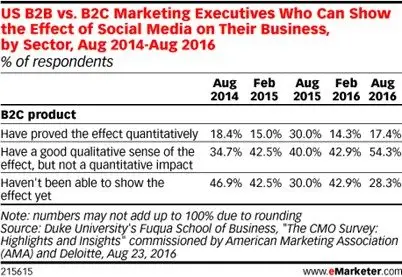
21 Sep Translating Social Value For the Bottom Line
Across the industry, ROI and tying social to business objectives are consistently reported as top challenges in understanding the marketing effectiveness of social media. With the amount of available social data growing every day, marketers are consistently reporting struggles with showcasing value, often due to limitations in time, expertise, or tools to analyze the data.
Because of these challenges, most marketing executives have reported having a good qualitative sense of social’s impact on business, but less of a quantitative understanding of how a robust social strategy, content creation, and community management translate to business objectives.
When analyzing social marketing efforts, how can you measurably show impact against a bottom line?
The Case for Awareness
The first step in the customer purchase journey is awareness. Making a consumer aware of your product, service, or brand is absolutely critical in prompting them to consider, evaluate, and ultimately take steps to purchase. Thankfully, tracking awareness is one of the most simple ways to gauge social value. Measuring impressions across social platforms can help you to compare social reach apples-to-apples with other marketing efforts, providing some perspective on how social platforms fit in and enhance a mixed marketing strategy. Approaching awareness as a vital piece of the customer journey helps to frame them within the value conversation.
The Impact of Social Website Traffic
Getting a consumer to consider your product, service, or brand is most effective when you are able to control the content that they see and drive the marketing message. What better place to do that than on your website? Driving traffic to your website from social as an objective provides an opportunity to measure the impact that social marketing has on your target consumer. This process is also something that is easy to track. Most social channels provide information regarding clicks to URLs within content, and click-through rates can be stacked up against other digital marketing efforts to garner an understanding of efficiency. In addition, understanding what socially-referred user behavior is on your website can help to generate a more clear picture of what your customer is looking for.
Tracking socially-referred behavior on your site can open up a variety of different opportunities to speak to social value. Looking at the percentage of visitors to your site from social, time on site, pages per visit, and bounce rate can help to paint a clearer picture of how social customers are learning about, and potentially impacting, the brand’s bottom line. Ultimately though, this leads to the strongest indicator of social value….
Conversions, Conversions, Conversions
Tracking conversions from social content can tie a quantitative, bottom-line approach to social content. Conversion ads across social platforms allow you to track conversions of a pixel on your website from social customers, and provide a more definitive ROI. Conversions to purchase are often the most obvious method of understanding value. However, placing pixels on different parts of your site can help you understand value beyond purchases alone. For example, knowing that a user that signs up for a mailing list generates 20% more revenue on average in a year, tracking social email sign-ups can further illuminate the value of social as a whole.
Don’t Forget The Value of Customer Care
When trying to show social value, it is easy to get caught up in metrics and forget about community management. Engaging with consumers on social through community management provides opportunities to provide personalized customer care in real time. Customer care is a vital part of a brand’s social presence – bad care can cause havoc, and good care can lead to better brand affinity.
According to the Harvard Business Review, “The Value of Customer Experience, Quantified,” customers who had best past experiences with a brand spend 140% more compared to those who had the poorest past experience.
Although community management is often a more qualitative piece to the puzzle, looking for opportunities to tie these one-to-one interactions to measurable business objectives can showcase the impact that these conversations can have on a business. Relationships with consumers ultimately build brand affinity and loyalty, which can significantly bolster the bottom line.
What paths have you taken to showcasing social ROI? If you’re interested in learning more about the best ways to measure for social value for your brand, contact us today!







